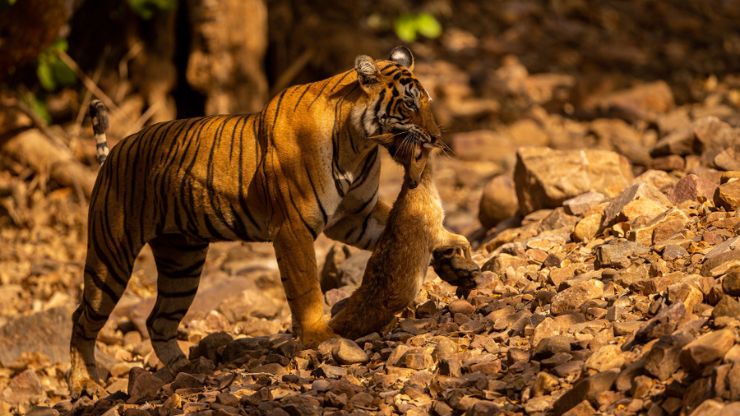In the intricate tapestry of nature, predators play a crucial role as the architects of balance, shaping ecosystems through their hunting prowess. From the savannas of Africa to the depths of the ocean, these apex predators command respect and admiration for their power and efficiency in the hunt. In this exploration, we delve into the realm of the most formidable predators, seeking to understand what sets them apart in the hierarchy of nature’s hunters. By examining their physical attributes, hunting strategies, and evolutionary adaptations, we aim to rank these magnificent creatures based on their dominance in their respective habitats. Join us on a journey through the wild, where lions roar, sharks patrol, and bears reign supreme, as we uncover the secrets behind the world’s most powerful predators.
Table of Contents
ToggleThe Most Powerful Predators.
1. Saltwater Crocodile (Crocodylus porosus):
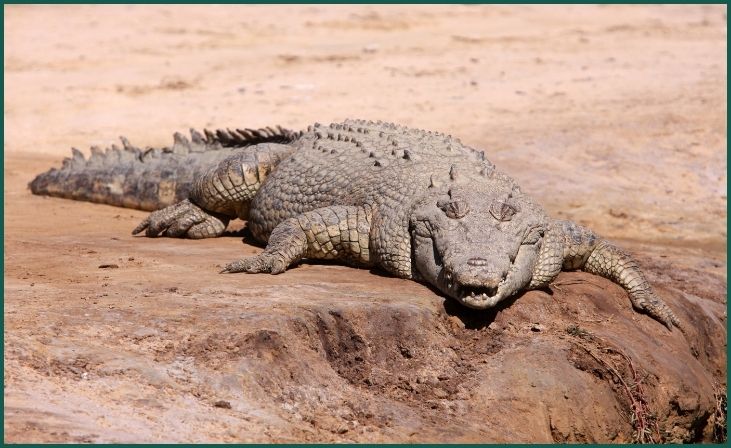
The saltwater crocodile, also known as the estuarine crocodile, is the largest living reptile, inhabiting the brackish and freshwater regions of Southeast Asia, Northern Australia, and the eastern coast of India. They are apex predators, with males reaching lengths of up to 6-7 meters (20-23 feet) and weighing over 1,000 kilograms (2,200 pounds). Their powerful jaws can deliver a crushing bite force of over 3,000 pounds per square inch (psi), making them one of the strongest biters among all animals. Saltwater crocodiles are ambush predators, using stealth and patience to capture their prey, which can range from fish and crustaceans to mammals like water buffalo and even other crocodiles.
Also, Read – 7 Ways To Use Vegetable Scraps
2. Great White Shark (Carcharodon carcharias):
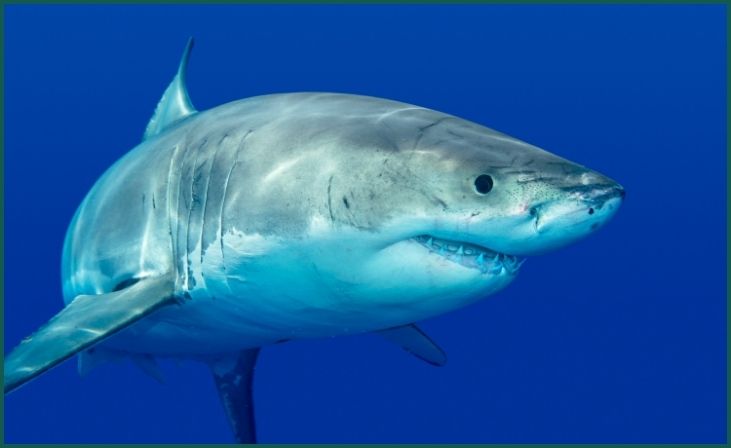
The great white shark is one of the most iconic predators of the ocean, inhabiting coastal waters worldwide. They are large-bodied fish, with adults typically reaching lengths of 4-6 meters (13-20 feet) and weighing over 1,000 kilograms (2,200 pounds). Great white sharks are apex predators, preying on a wide variety of marine animals, including seals, sea lions, fish, and even smaller sharks. They possess powerful jaws filled with rows of serrated teeth, allowing them to inflict devastating bites on their prey. Great whites are known for their ambush hunting tactics, often launching surprise attacks from below to catch their prey off guard.
3. Tiger (Panthera tigris):
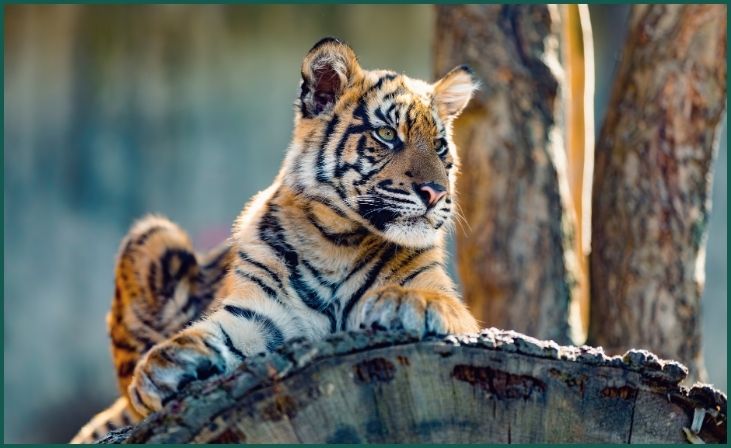
Tigers are the largest members of the cat family and are native to various habitats across Asia, including forests, grasslands, and mangrove swamps. They are apex predators, with males reaching lengths of up to 3 meters (10 feet) and weighing over 300 kilograms (660 pounds). Tigers are solitary hunters, relying on stealth and ambush tactics to catch their prey, which includes a wide range of ungulates such as deer, wild boar, and water buffalo. They are incredibly powerful animals, capable of taking down prey much larger than themselves with a combination of sheer strength and agility.
4. Lion (Panthera leo):

Lions are large carnivorous mammals native to sub-Saharan Africa and a small population in India’s Gir Forest. They are highly social animals, living in prides consisting of multiple females, their offspring, and a few resident males. Lions are apex predators in their ecosystems, preying primarily on large ungulates such as zebras, wildebeests, and buffalo. They are known for their cooperative hunting strategies, with females often working together to ambush and overpower their prey. Lions possess powerful jaws and sharp claws, enabling them to deliver fatal blows to their victims.
Also, Read – Top 8 most expensive fighter jets in 2024
Don't just scroll, subscribe!
BuzzTrail's unique web-stories are the cure for boredom you've been waiting for.
5. Polar Bear (Ursus maritimus):
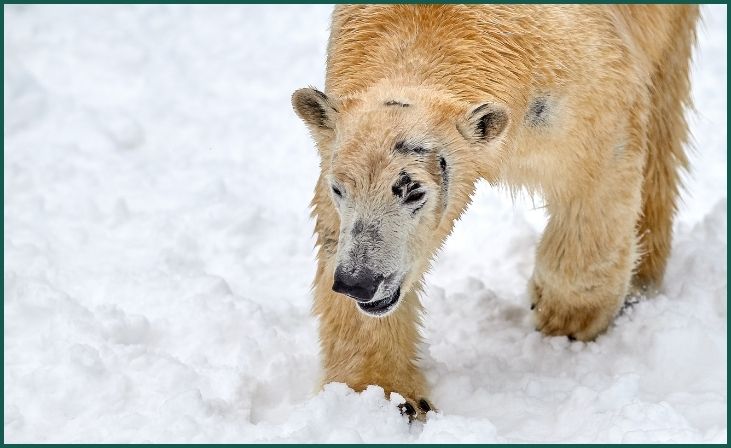
Polar bears are the largest land carnivores, inhabiting the Arctic region and its surrounding seas. They are superbly adapted to their icy environment, with a thick layer of insulating fur and a layer of blubber to keep them warm in sub-zero temperatures. Polar bears are apex predators, primarily preying on seals, which they hunt by patiently waiting at breathing holes or stalking them on sea ice. They are powerful swimmers and can cover long distances in search of prey. Despite their predominantly carnivorous diet, polar bears are opportunistic feeders and will scavenge on carcasses or hunt smaller mammals and birds when seals are scarce.
6. Komodo Dragon (Varanus komodoensis):
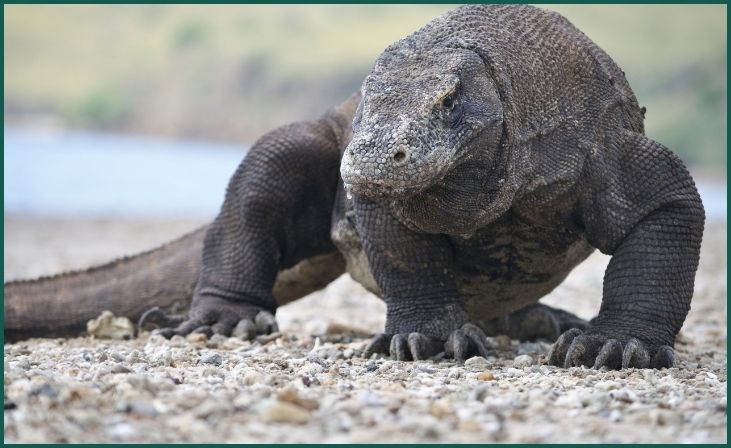
The largest lizard species on Earth, the Komodo dragon is indigenous to the Indonesian islands of Gili Motang, Rinca, Komodo, and Flores. They are apex predators in their habitats, with adults typically reaching lengths of 2-3 meters (6.6-9.8 feet) and weighing over 70 kilograms (150 pounds). Komodo dragons possess powerful jaws armed with serrated teeth and a venomous bite, which they use to immobilize and eventually kill their prey. They are opportunistic hunters, preying on a variety of animals, including deer, pigs, water buffalo, and even smaller Komodo dragons. Despite their size, Komodo dragons are agile climbers and swimmers, allowing them to hunt in diverse environments.
7. Orca (Orcinus orca):
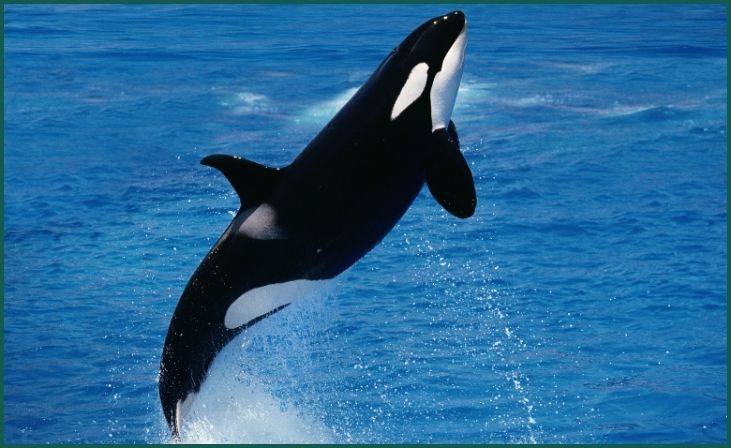
The orca, or killer whale, is the largest member of the dolphin family and is found in oceans worldwide, from the Arctic to the Antarctic. They are apex predators, known for their intelligence, complex social structures, and diverse diet. Orcas hunt cooperatively in highly organized pods, using sophisticated communication and strategic hunting tactics to catch prey. Their diet includes fish, squid, marine mammals such as seals and sea lions, and even other whales. Orcas are formidable predators, capable of taking down prey much larger than themselves through coordinated attacks and sheer strength.
8. Siberian Tiger (Panthera tigris altaica):
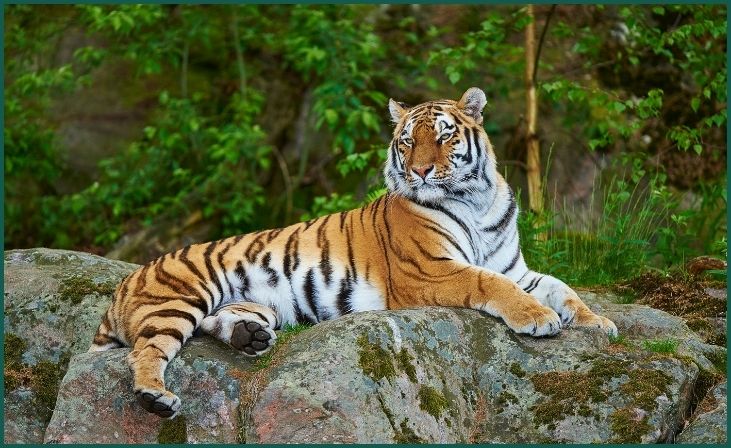
The Siberian tiger, also known as the Amur tiger, is the largest subspecies of tiger and is native to the forests of eastern Russia and northeastern China. They are apex predators, with males reaching lengths of up to 3.5 meters (11.5 feet) and weighing over 300 kilograms (660 pounds). Siberian tigers are solitary hunters, relying on stealth and ambush tactics to catch their prey, which includes deer, wild boar, and elk. They are powerful animals, capable of bringing down prey much larger than themselves with a combination of brute force and agility.
9. African Wild Dog (Lycaon pictus):
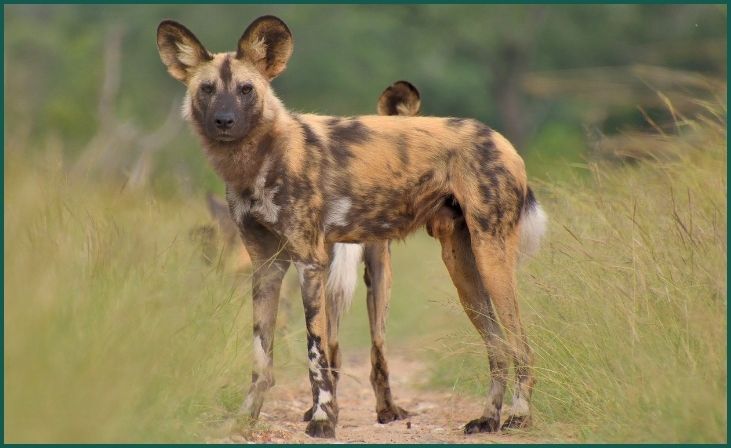
African wild dogs, also known as painted wolves, are highly social carnivores native to sub-Saharan Africa. They live in packs consisting of up to 30 individuals, with a complex social structure and cooperative hunting strategies. African wild dogs are endurance hunters, capable of covering long distances in pursuit of their prey. They prey primarily on medium-sized ungulates such as gazelles and impalas but will also hunt larger prey like wildebeests and zebras when the opportunity arises. Their success as hunters relies on teamwork, communication, and a relentless pursuit of their prey.
10. Grizzly Bear (Ursus arctos horribilis):
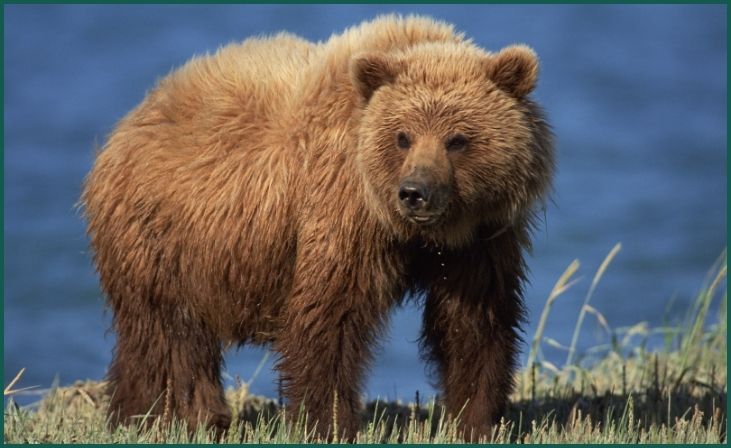
Grizzly bears, also known as North American brown bears, are large carnivores native to North America, with populations found in Alaska, Canada, and parts of the contiguous United States. They are apex predators in their ecosystems, with males reaching lengths of up to 2.5 meters (8.2 feet) and weighing over 350 kilograms (770 pounds). Grizzly bears are omnivorous, with a diet that includes fish, mammals, carrion, and vegetation. They are powerful animals, capable of hunting large prey like moose and bison, but they also scavenge on carcasses and forage for berries and roots, especially during the summer months.
Conclusion
Conclusion: As we conclude our exploration of nature’s most powerful predators, we’re left in awe of their remarkable abilities and importance in maintaining ecological balance. From the mighty lion to the stealthy great white shark, each predator embodies the pinnacle of evolution and survival. Their diversity of tactics and adaptations reminds us of the intricate web of life and the interconnectedness of all living things. As stewards of this planet, it’s imperative to recognize and protect these apex predators, ensuring the continued health and resilience of our natural world.
FAQs
How were the predators ranked?
How were the predators ranked?
Predators were ranked based on criteria such as physical strength, hunting techniques, intelligence, and success rate in hunting and survival.
Why are predators important in ecosystems?
Why are predators important in ecosystems?
Predators help regulate prey populations, maintain ecosystem balance, and promote biodiversity by controlling the population of herbivores and preventing overgrazing.

